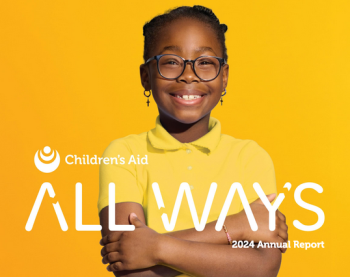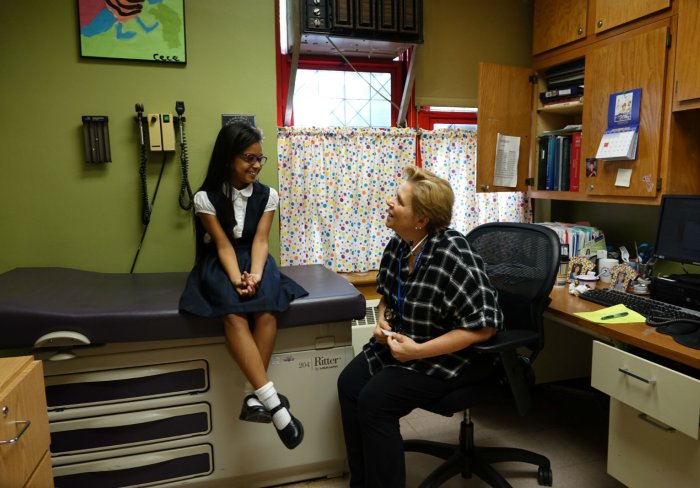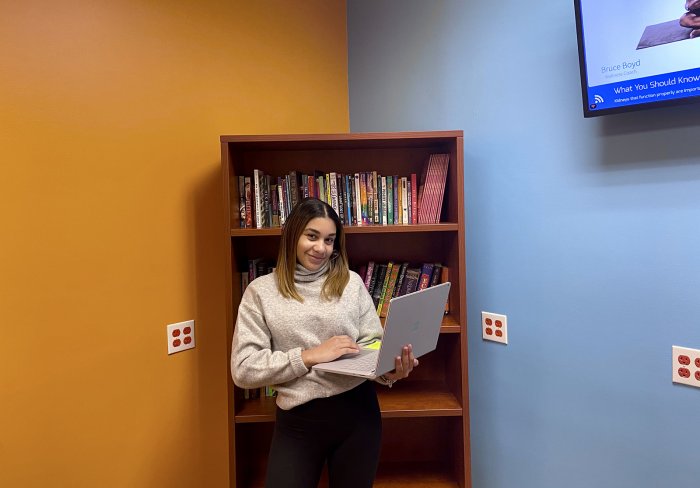The transition to remote learning has been a challenge for schools nationwide. As a community school, Children’s Aid College Prep Charter School (CACPCS) was uniquely equipped to guide staff, students, and families through this transition in the midst of a pandemic.
CACPCS, a Children’s Aid community school, utilizes a whole-child, trauma-informed approach to education. It was clear to the staff from the onset of the school’s closure in March that the uncertainty, disruption, and likely trauma created by COVID-19 had the potential to weaken many of the positive academic and social and emotional skills the students had gained earlier in the school year.
In order to provide stability for its students, the community school made a number of adjustments. Mentors, which the school calls Success Mentors, focused on attendance improvement earlier in the year, continued to check-in with students each day with a particular focus on those students who were struggling to remain regularly engaged in remote learning. Success Mentors made nearly 3,000 outreach calls to families from March 23 through June 22 to support students, their parents, and caregivers during remote learning. This allowed teachers to focus on teaching and learning. The school’s social workers (called Life Coaches) provided ongoing support to families when notified of confirmed cases of COVID-19 in the home or joblessness due to the shut-down. The Life Coaches offered grief counseling and made referrals to community supports.
The transition to remote learning transformed parents’ role in their children’s education overnight. As a result, partnering with parents and caregivers was crucial for maintaining a high level of student engagement. Weekly parent Zoom meetings from March through June provided parents with a space to come together for mutual support while providing school leadership with invaluable input and feedback on remote learning in real time. Parents had access to training and other opportunities for support in small groups and individually on topics ranging from coping strategies to how to navigate SeeSaw, a remote learning platform. The school’s co-teaching model, kept the student to teacher ratio at about 12:1, providing students with greater support and teachers with a more manageable work load.
“How CACPCS was organized and staffed as a community school – and the fact that CACPCS had developed some core competencies as a community school – allowed us to respond to the unique set of challenges created by the COVID-19 crisis fairly effectively,” said Drema Brown, Head of School at CACPCS. “For example, the fact that all of the staff had been trained at the start of the year what trauma is, the effects of trauma on learning, and how to relate differently to students based on this understanding helped the staff understand how to support students and their families while practicing self care in the face of their own trauma as a result of COVID-19’s impact on everyone’s lives.”
Finally, CACPCS’s on-going investments in technology over the past several years allowed the school to be able to provide a tablet or Chromebook to any student who needed one for remote learning. This created greater equity across the board. The school distributed nearly 500 tablets and Chromebooks and nearly a dozen wifi “hotspots” from March through June.
“The principals and I prioritized listening to school stakeholders at every opportunity in order to understand their questions, concerns, and to receive their input and feedback as the situation progressed,” Brown said. “We tried to validate the needs of students, families, and staff to feel safe and protected, and we created many opportunities for school stakeholders to connect with one another to feel appreciated and valued under very difficult circumstances.”
In addition to increased training and coaching, staff were treated to wellness sessions, staff game nights, and virtual teacher appreciation events.
Students with special needs received support from paraprofessionals, virtual tutoring, and parent and caregiver workshops focused on how to support children based on their learning differences.
CACPCS also provided virtual tutoring and Spanish-bilingual workshops for parents of students who needed them.
The work to make sure students were prepared continued into the summer, when staff conducted transition sessions for all 5th and 8th graders to make sure they were ready to take the next steps to continue their education.
“The kind of work described could only occur because as a fully realized community school, CACPCS was already organized to deliver these supports and the staff had the core competencies in place to deliver them,” Brown said.







